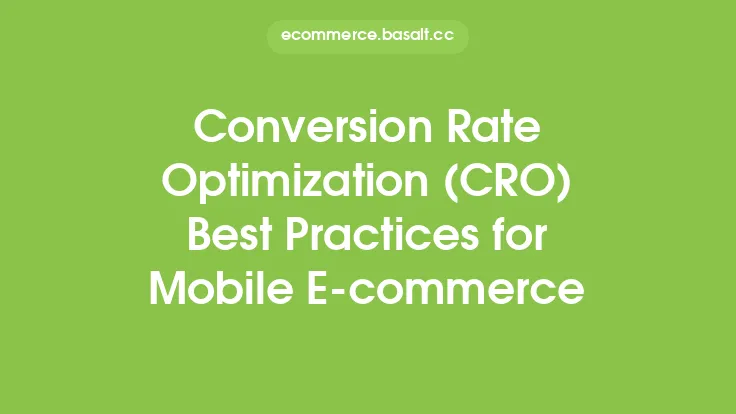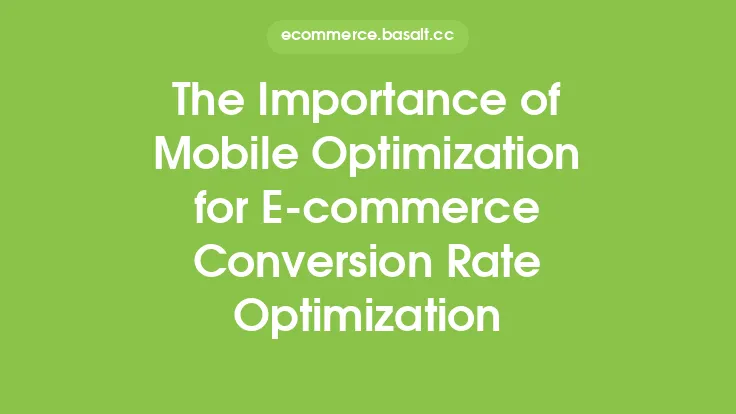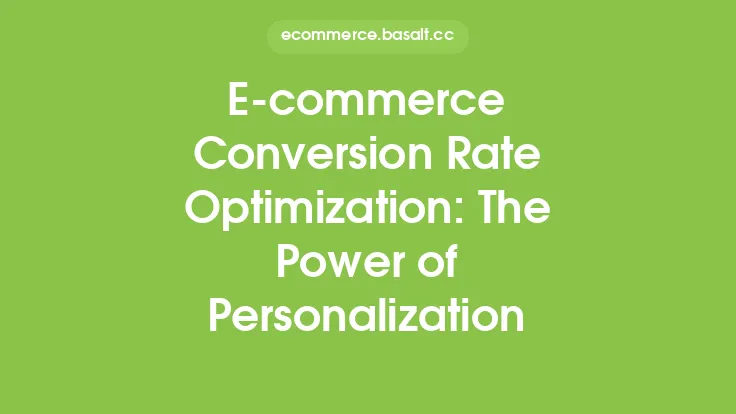When it comes to e-commerce conversion rate optimization, one of the most effective strategies is A/B testing, also known as split testing. This involves comparing two or more versions of a webpage, email, or application to determine which one performs better in terms of converting visitors into customers. In this article, we will delve into the world of A/B testing for e-commerce conversion rate optimization, exploring its benefits, best practices, and how to implement it successfully.
What is A/B Testing?
A/B testing is a method of comparing two or more versions of a digital product or webpage to determine which one performs better. It involves creating multiple versions of a webpage or application, each with a different variable, such as a headline, image, or call-to-action (CTA) button. The different versions are then shown to a random sample of users, and the results are measured to determine which version performs better. The goal of A/B testing is to identify changes that can be made to a webpage or application to improve its conversion rate, which is the percentage of visitors who complete a desired action, such as making a purchase or filling out a form.
Benefits of A/B Testing for E-commerce Conversion Rate Optimization
A/B testing offers numerous benefits for e-commerce businesses looking to optimize their conversion rates. Some of the key benefits include:
- Improved conversion rates: By identifying and implementing changes that improve the performance of a webpage or application, businesses can increase their conversion rates and ultimately drive more sales.
- Data-driven decision making: A/B testing provides businesses with data-driven insights into what works and what doesn't, allowing them to make informed decisions about their marketing and optimization strategies.
- Reduced risk: By testing changes before implementing them site-wide, businesses can reduce the risk of making changes that may have a negative impact on their conversion rates.
- Increased revenue: By optimizing their conversion rates, businesses can increase their revenue and ultimately drive more growth.
Best Practices for A/B Testing
To get the most out of A/B testing, there are several best practices that businesses should follow. Some of the key best practices include:
- Start with a hypothesis: Before starting an A/B test, businesses should have a clear hypothesis about what they are trying to achieve and what changes they think will have the greatest impact.
- Test one variable at a time: To ensure that the results of an A/B test are accurate and reliable, businesses should test one variable at a time. This will help to prevent confounding variables and ensure that the results are due to the change being tested.
- Use a large enough sample size: To ensure that the results of an A/B test are statistically significant, businesses should use a large enough sample size. This will help to reduce the risk of false positives and ensure that the results are reliable.
- Run the test for a long enough period: To ensure that the results of an A/B test are accurate and reliable, businesses should run the test for a long enough period. This will help to account for any external factors that may impact the results, such as changes in traffic or seasonality.
How to Implement A/B Testing
Implementing A/B testing is relatively straightforward, and there are several tools and platforms available to help businesses get started. Some of the key steps involved in implementing A/B testing include:
- Choosing an A/B testing tool: There are many A/B testing tools available, including Google Optimize, VWO, and Optimizely. Businesses should choose a tool that meets their needs and budget.
- Identifying areas for testing: Businesses should identify areas of their website or application that they want to test, such as the homepage, product pages, or checkout process.
- Creating test variations: Businesses should create multiple versions of the webpage or application, each with a different variable, such as a headline, image, or CTA button.
- Running the test: Businesses should run the test, using the A/B testing tool to split traffic between the different versions and measure the results.
- Analyzing the results: Businesses should analyze the results of the test, using the data to determine which version performed better and what changes can be made to improve the conversion rate.
Common A/B Testing Mistakes to Avoid
While A/B testing can be a powerful tool for e-commerce conversion rate optimization, there are several common mistakes that businesses should avoid. Some of the key mistakes to avoid include:
- Not having a clear hypothesis: Businesses should have a clear hypothesis about what they are trying to achieve and what changes they think will have the greatest impact.
- Not testing for a long enough period: Businesses should run the test for a long enough period to account for any external factors that may impact the results.
- Not using a large enough sample size: Businesses should use a large enough sample size to ensure that the results are statistically significant.
- Not segmenting the data: Businesses should segment the data to ensure that the results are accurate and reliable.
Advanced A/B Testing Techniques
For businesses that are more experienced with A/B testing, there are several advanced techniques that can be used to take optimization to the next level. Some of the key advanced techniques include:
- Multivariate testing: This involves testing multiple variables at the same time to determine which combination of changes has the greatest impact.
- Personalization: This involves using data and analytics to create personalized experiences for users, such as personalized product recommendations or content.
- Machine learning: This involves using machine learning algorithms to analyze data and make predictions about user behavior, such as which users are most likely to convert.
Conclusion
A/B testing is a powerful tool for e-commerce conversion rate optimization, allowing businesses to identify changes that can be made to improve the performance of their website or application. By following best practices, avoiding common mistakes, and using advanced techniques, businesses can get the most out of A/B testing and drive more growth and revenue. Whether you're just starting out with A/B testing or are looking to take your optimization efforts to the next level, this guide has provided you with the knowledge and insights you need to succeed.





